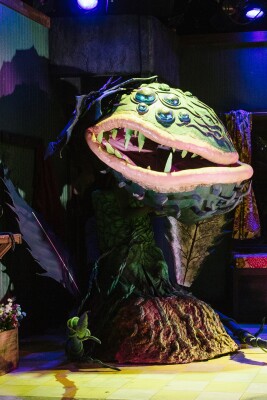

As director of BYU’s production of Little Shop of Horrors, George Nelson wanted to provide a sense of foreboding, encouraging the audience to recognize the “flaxen cord” that Audrey II is in Seymore’s life without him knowing. The ominous ticking clock towering above the set creates this atmosphere and comes from science fiction tropes almost as old as the genre itself. The idea of the clock ticking away to destruction originated in 1947 by the Chicago Atomic Scientists (a group of researchers who worked on the creation of the first nuclear bomb used in World War II). “The Doomsday Clock” represented the time until the actions of mankind would end the world. The clock views a hypothetical man-made global catastrophe as midnight, and the minutes till midnight are measured by the Bulletin of the Atomic Scientists, which still exists to this day.

When the clock was first invented, 13 years before the original Little Shop of Horrors film was written and directed by Roger Corman, changes in time directly correlated to the nuclear developments and concerns that the Bulletin had at the time. These concerns are evident in the development of western science fiction and traces of them can be found in both the original Little Shop of Horrors as well as the musical adaptation Menken and Ashman wrote 20 years later. But Little Shop’s relationship to the clock has become more poignant in the past decade in ways that Corman, Menken, Ashman, or even Frank Oz (who adapted the musical to a second filmed version in 1986) could have anticipated.

In 2015 the Bulletin of Atomic Scientists expanded the criteria of what contributed to the clock moving closer to midnight to include concerns regarding climate change. In the past five years, the clock has moved from three minutes to midnight steadily closer, with the Bulletin announcing earlier this year that the clock was the closest it’s ever been to midnight, 100 seconds. Audrey II represents a trend in fiction of the natural world fighting back against mankind’s mistreatment of it. From Audrey II in Little Shop, to the Whomping Willow in the Harry Potter series, to the Batman villain Poison Ivy, to Annihilation written and directed by Alex Garner in 2018, the concept of plants/nature beginning to fight back against mankind’s mistreatment of them has been a trend that Little Shop of Horrors did not intend to start but has become one of the most classic examples of.


